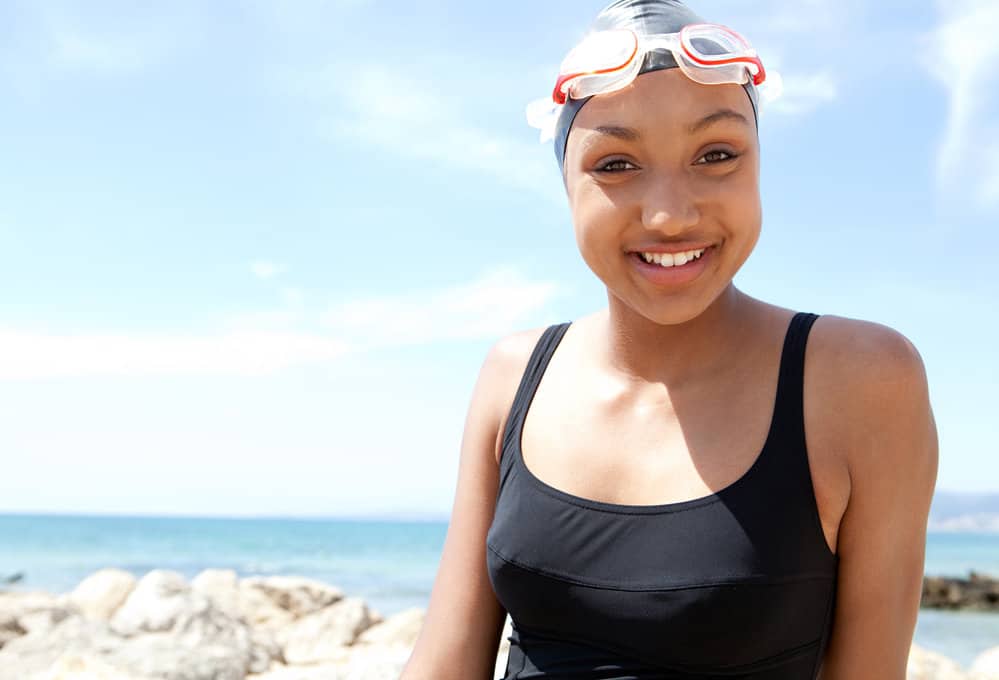
Despite its ultra-hydrating benefits, water can be your hair’s worst enemy. It can cause your hair to revert, jumpstart the dreaded frizzies, or (in the case of chlorinated water) dry your hair out completely.
And that’s why so many people take the time to prep their hair before coming anywhere near water. You may have heard that swimming caps can keep your hair bone dry, but is that really the case?
Will a swim cap keep hair dry? Are swim caps totally waterproof?
If you want to know for sure, we’ve got the answers you’re looking for! In this article, we’ll take a look at whether or not swim caps keep your hair dry. We’ll also give you tips on protecting your hair before a dip – let’s get right into it!
Table of Contents
Will a Swim Cap Keep Hair Dry?
Swim caps don’t keep your hair dry, although there is a common misconception surrounding swimming caps and their intended purpose. You’ll probably be surprised to hear that swim caps are not designed to keep your hair dry.
It’s almost impossible to create a water-tight seal with a one size fits all swim cap. Additionally, water is a fluid and can seep into even the tiniest creases and cracks.
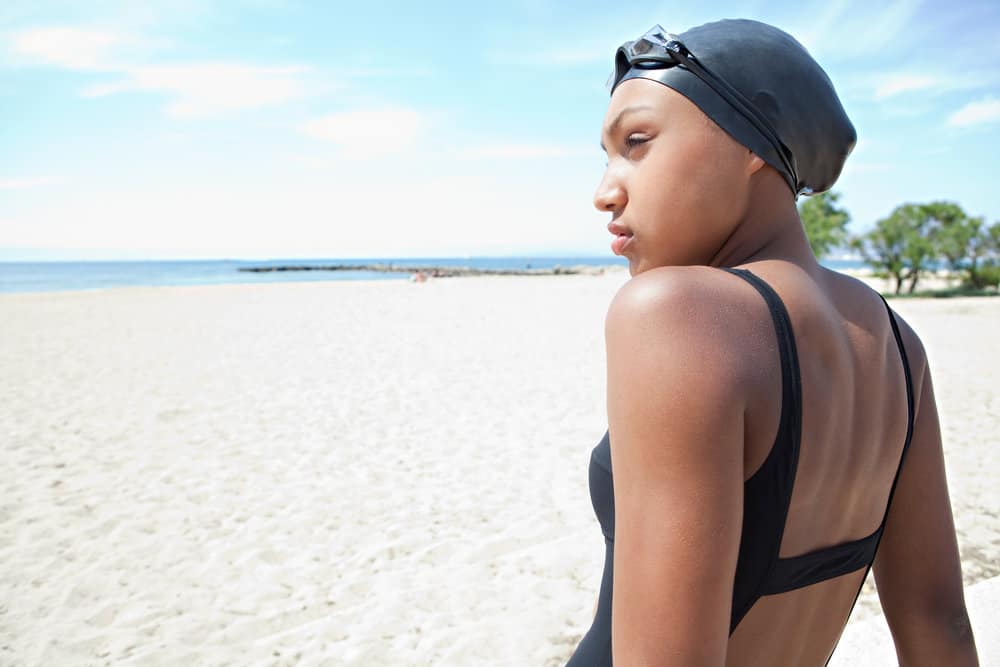
Instead of keeping your strands dry, swim caps are actually designed to improve your swimming performance. They make you more hydrodynamic and help prevent your hair from getting in your and other people’s way.
The good news is that even though swimming caps don’t block water completely, they do offer some protection from the water.
As long as it fits well and is made of waterproof material, it will reduce the amount of water that makes its way to your strands.
By the end of your swimming session, your hair will probably be damp rather than sopping wet. While this doesn’t sound like much, it can help prevent some of the negative effects of chlorinated and salty water.
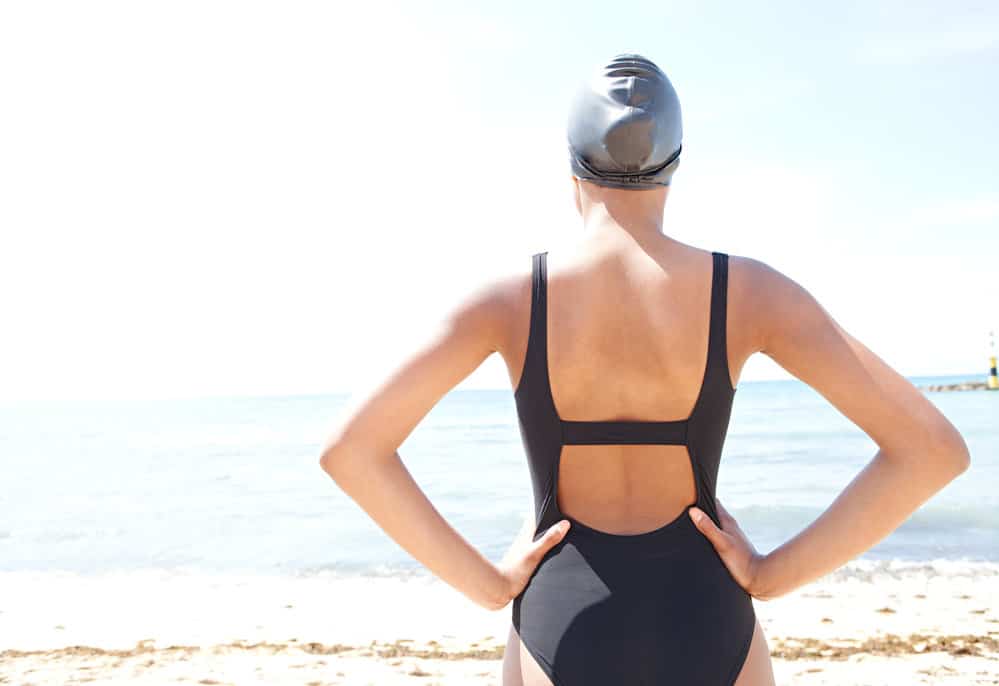
How to Keep Your Hair Dry With a Swim Cap
Although swim caps don’t keep your hair dry on their own, there are a few steps you can take to block the water out. To start, gather all of your hair into a bun in the center of your head. Pull a swim cap or shower cap onto your head and gently pat your bun to help flatten it.
Go around the cap’s perimeter, and tuck in any stray strands.
Then, squeeze a second silicone swim cap onto the first one. That will help create a more watertight seal and further cut down on the amount of water that can slip through.
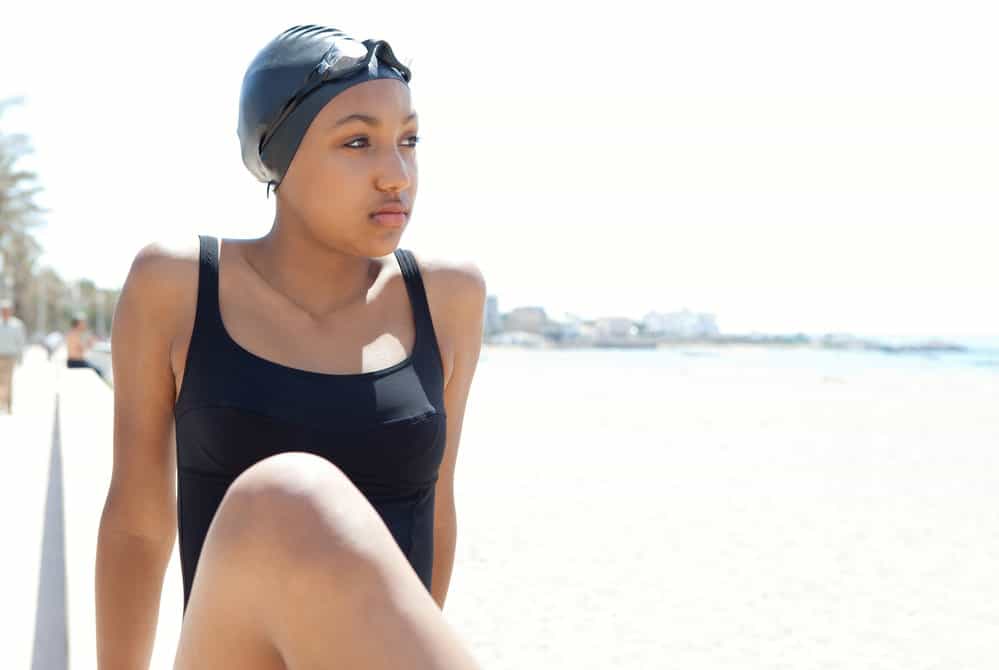
How to Pick the Right Swim Cap
When picking a swim cap, your focus should be on how well it fits. A well-fitting swim cap fits over all of your hair snugly but not so tight that it leaves an indentation on your forehead.
After all, you don’t want your cap to slip or fall off in the pool.
Regular-sized swim caps usually fit well for most people. But, if your head is small or regular caps feel too loose, you can try a children's swim cap instead.
Another thing to take note of is the material your swim cap is made of.
You want to choose a cap that’s made of a durable and stretchy material like silicone, lycra, neoprene, or latex. Depending on your personal preferences, you can pick from any of these options.
While no swim cap material will leave your hair bone dry, silicone caps are more effective at keeping water out.
That’s because silicone caps tend to give you a tighter fit and wrinkle less than the other materials. They’re also smooth and highly flexible, which is less damaging to your strands.
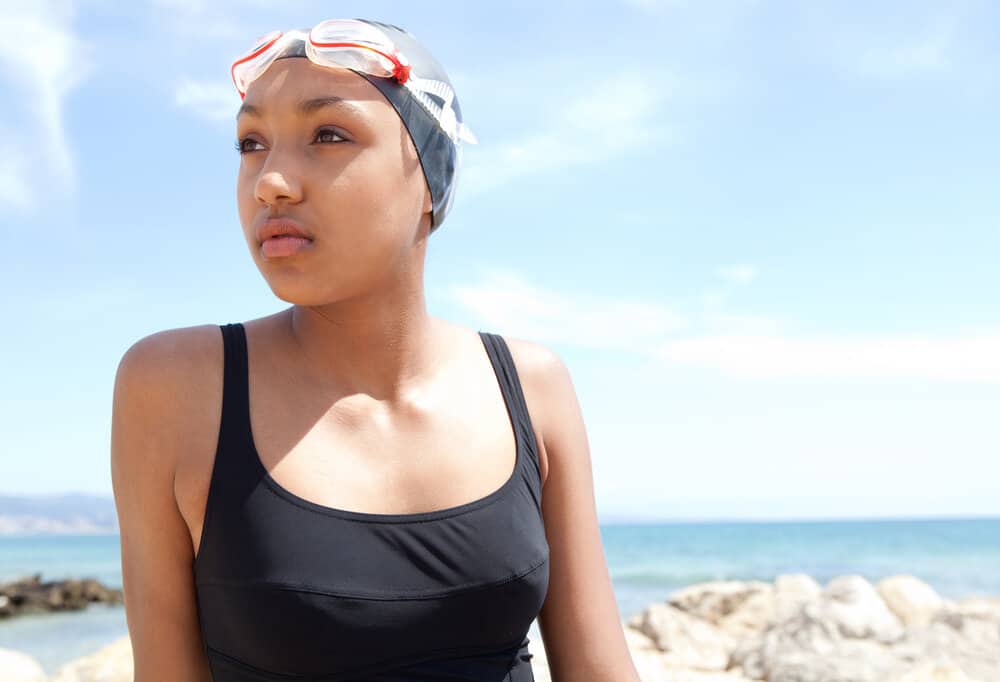
What Are the Benefits of Wearing a Swim Cap?
Although swim caps don’t keep your hair dry while swimming, they have numerous other benefits. In fact, putting on a swim cap can be an incredibly valuable addition to your pre-swim routine.
Still not convinced? We’ll look at some of the benefits of wearing a swim cap below.
They Improve Your Swimming Performance
The main benefit of wearing a swim cap is that they help make you a better swimmer. Swim caps reduce drag and resistance. They create a more streamlined silhouette so you can glide through the water.
And with your hair neatly tucked out of the way, you won’t have to worry about the strands getting in your face. That means you’ll have better vision and won’t have to pause to wipe the hair from your eyes.
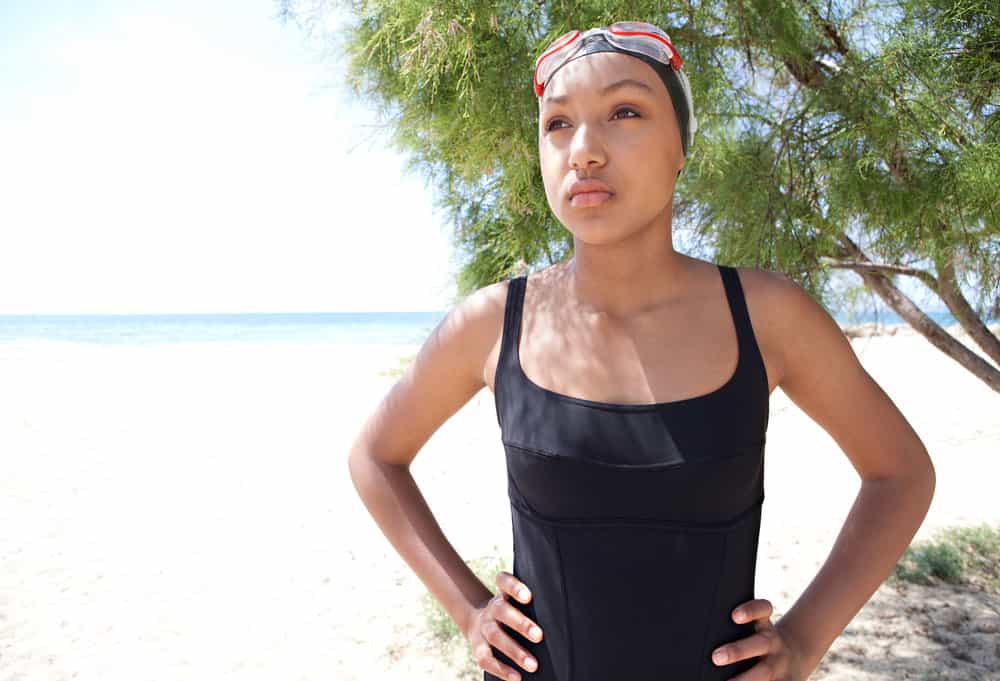
Swim Caps Can Ease Anxiety
Swimming anxiety is extremely common in beginners and children. Luckily, wearing a swim cap can help you be more comfortable.
It helps dull the sensation of putting your head and face underwater, which can ease your fears. And if you prefer wearing goggles in the water, a swim cap will help make them more secure.
They Can Keep You Warm
If you’ve ever gone swimming in an unheated pool, you know how cold the water can be. In addition to being uncomfortable, a cold pool can be distracting and cause you to come down with a cold.
Swim caps help trap your body heat against your scalp. So if you’re swimming in chilly water, they can go a long way in keeping you warm.
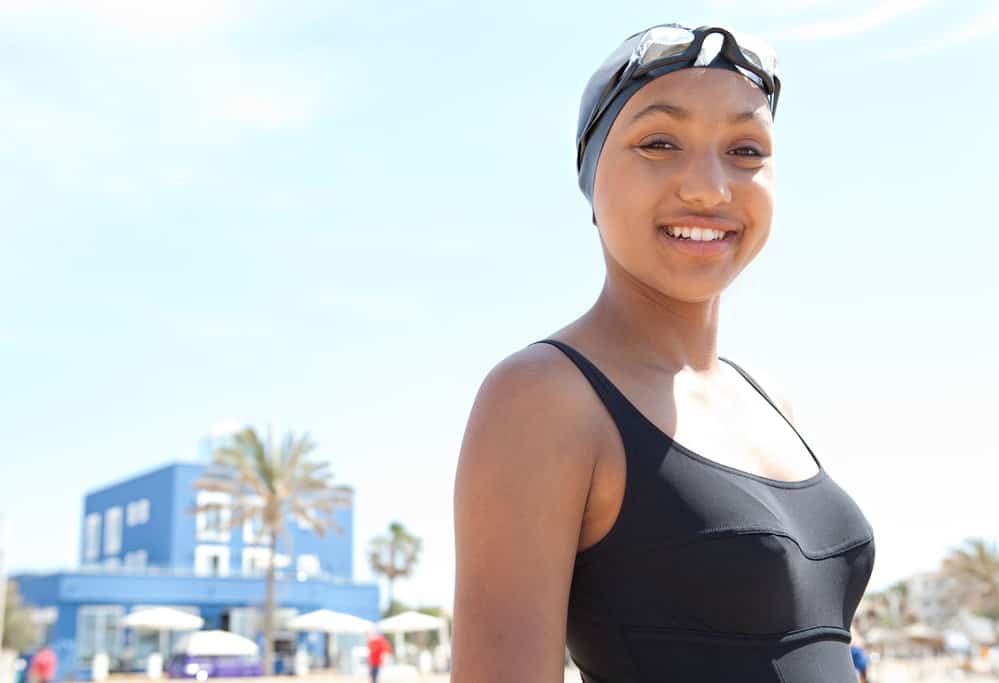
Swim Caps Protect Your Hair
A well-fitting swim cap is one of your best lines of defense against damaging environmental factors. Saltwater, chlorinated water, and sunlight can all suck the life out of your strands.
They can lead to a sharp increase in breakage, dryness, and split ends.
But since swim caps create a physical barrier between your hair and the elements, they help you keep damage to a minimum.
Wearing a Swim Cap Can Protect Your Color
Salt, chlorine, and sunlight are just as damaging to your hair color as they are to the health of your hair. They can fade rich, vibrant shades and leave blonde hair with a sickly green cast.
Fortunately, swim caps can prevent this by reducing the amount of water and sunlight that comes into contact with your strands.
They Can Make Swimming Safer
Swim caps keep your hair out of your eyes and reduce anxiety. They also eliminate a potential source of distraction and make you a more confident swimmer. That creates a safer swimming environment by allowing you to keep your full attention on the water.
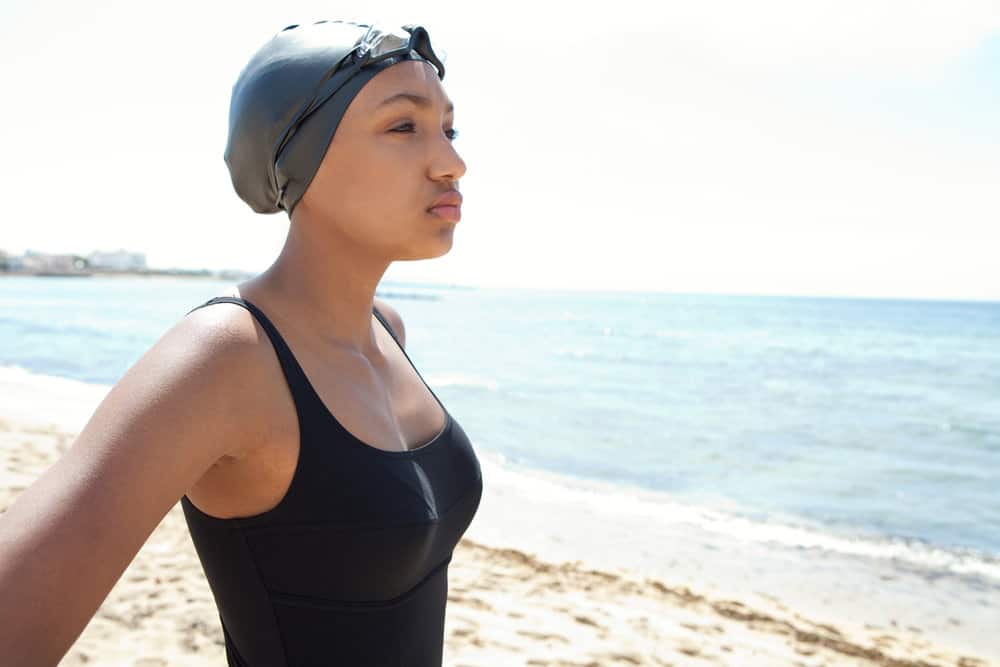
How Do You Protect Your Hair Under a Swim Cap?
Now that you know that swim caps don’t keep your hair dry, you might be looking for ways to protect your strands. After all, chlorine and saltwater are extremely drying and can lead to breakage or hair loss.
We’re happy to tell you that there is a relatively simple solution!
You see, your hair acts a lot like a sponge. When it’s dry, it will suck up any water it comes into contact with and swells. But when it's already wet, it doesn’t have the room to take on more.
If you fill your hair with fresh water before your dip, your strands won’t be able to absorb the pool water.
You can also take the protection up to the next level by applying a leave-in treatment or conditioner to your damp strands. That will block even more of the potentially damaging water and give your hair a hydration boost.
- Can You Go Swimming With Box Braids?
- Can You Wet Braids?
- Will My Hair Dye Run in a Swimming Pool?
- How to Protect Hair from Chlorine
Although swim caps don’t keep your hair dry, they come with an impressive list of benefits. They range from becoming a better swimmer to reducing the amount of hair damage your swimming session will cause.
Just make sure that your cap fits well and is made of a quality, waterproof material.
And if you do want to keep your hair dry, try layering a second cap over the first one. That said, we hope that this article has answered your questions and wish you great luck with your hair care journey!




